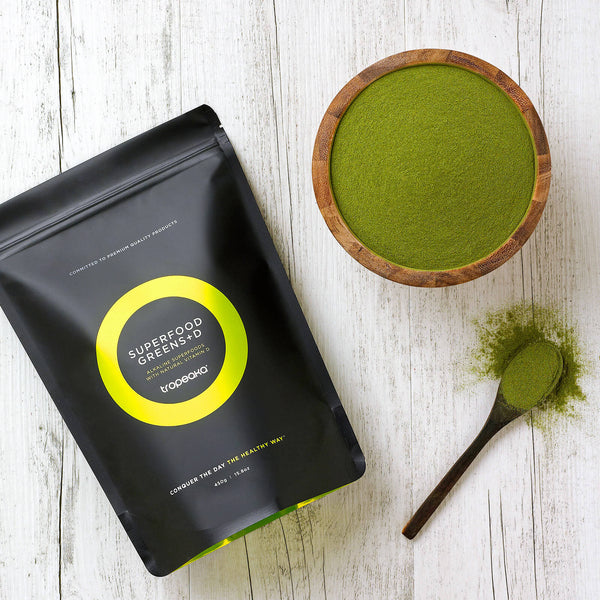“The difference between peak performance and poor performance is not intelligence or ability; most often, it’s the state that your mind and body are in.” — Tony Robbins
F
light or fight is supposed to be a temporary state that helps us escape danger. However, many of us are spending a lot more time in this state than what is healthy for us. Too much time in the sympathetic nervous system puts us in a negative headspace and throws the body out of balance.
Have you ever believed you have to put up with whatever mood you’re in? Thankfully, this isn’t true, and we have easy access to a positive state of mind a relaxed body via our parasympathetic nervous system. The question is, how do we get there?
There are 3 tools that we can tap into at any moment of any day to trigger the parasympathetic nervous system and transform our physical, mental and emotional state. The three transformational tools you can access right now are breath, movement and sound. Yes, they are already happening naturally, but with a little bit of dedicated time and mindful attention, breath, movement and sound can be used to restore balance and transform your wellbeing.
‘But I don’t have time…’
You have too many things to do? Then these tools are especially important for you. Within a matter of minutes, you can calm your mind, become more present, and get on with your to-do list feeling refreshed, recharged and rejuvenated. This is time well spent because it not only makes a massive difference to your day, it adds up over the weeks, months and years to transform your life.
1
Breath
Breathing is one of the most basic and unconscious functions of life, and yet the mind-body health benefits of deep, diaphragmatic breathing are profound:
- Decrease stress almost instantly
- Shift into a better mood and mindset
- Enhance your blood oxygenation
- Improve your pain tolerance
- Manager anger and process negative emotions
- Improve your gut health
- Sleep better
- Experience weight loss and fat burning
- Strengthen your immune system
- Detoxify the body
Breath and the nervous system
So why are we breathing shallow most of the time? Our breathing is deeply intertwined with our nervous system, and shallow, rapid breathing is controlled by the ‘flight or fight’ sympathetic nervous system. In this state, your heart beats faster, your blood pressure increases and every system in your body is compromised.

Shallow breathing keeps the body in a cyclical state of stress, with our stress causing shallow breathing and shallow breathing feeding our physical, mental and emotional stress.
When we’re in the ‘rest and digest’ parasympathetic state, we take longer, smoother, slower and deeper breaths. This is accompanied by a lower heart rate, loose jaw, relaxed shoulders, a stomach that gently rises and falls with each breath, and the stimulation of our digestive processes.
Take a deep, cleansing breath right now
Breathe deep into your belly and notice your chest expand and relax. Can you fill up and expand in all directions? Expand from bottom to top and from the middle outwards. Take another; notice how you feel?
With as little as 5 minutes a day, your breath is a tool that can shift your state and transform your life. In addition to simply taking deeper breaths, there are several breath-work practices that alter breathing patterns to modulate brain activity, putting practitioners into a state of healing.
We must move in a way that sends a new set of chemical messages to our brain
2
Movement
What’s your posture like when you’re feeling happy, proud or confident? How do you move around when you’re in love or excited? And how does this compare to when you’re feeling sad, ashamed or anxious?
Just as the relationship between our breathing and our state goes both ways, the same is true for the way we move our bodies. The thoughts we think and emotions we feel influence the way we move, and the way we move impacts the quality of our thoughts and feelings.
Move mindfully
Although this is an unconscious relationship, consciously deciding to change your posture or move your body can transform your state. If we understand emotions as energy in motion, it makes sense that movement is a powerful tool that can improve your mood in an instant. At the very least, movement can help us begin moving through stress, sadness and other negative emotions, rather than becoming stuck in them.

Our moods are just chemical reactions
Chemical changes are happening all the time in our bodies, especially when we feel strong emotions, such as love, shame, fear and excitement. These chemical reactions change how we feel physically and unconsciously impact the way we move. These movements and postures send messages back to our brains that continue to fuel the corresponding emotional states.
To break the cycle, we need to use our conscious mind; we must move in a way that sends a new set of chemical messages to our brain. A workout, walk, stretch, dance, or even a big smile can transform your state in a matter of moments.
The power of dance
There are many studies supporting the power of dance to improve our psychological state. Dancing engages and changes the brain in unique ways, and has been proven to boost your mood, decrease stress, and improve focus and concentration. It’s little wonder that dance has been a central part of human cultures for millennia.
Not only is daily movement great for your body, but it’s also one of the most beneficial things you can do for your mind. Regular exercise remodels our dopamine reward system to help relieve depression and expand our capacity for joy.
Certain frequencies of vibrating air can impact your physiology and mental state
3
Sound
'Raise your vibration’ - what does it really mean?
According to quantum physics, all matter in the universe is vibrating at specific frequencies. Our physical bodies are no exception, and we are literally humming. Sound is the relatively small range of vibrational frequencies we can hear. Vibrating air molecules hit our eardrums, which stimulates neural activity that changes our mood, focus and emotional state.
Not only can vibrations cause us to experience the full spectrum of positive and negative emotions, but they also have a corresponding effect on our brain waves, along with every cell and tissue throughout the body.
Supporting wellness with sound
Disease, depression, and stress cause us to vibrate at a lower frequency. There’s no denying that music, sound and inaudible frequencies are powerful forces that have a direct effect on our health and wellbeing.
Sound healing is the science of biohacking your bodily rhythm to promote healing, happiness, and vitality. This practice uses different vibrational frequencies to repair damaged tissues and cells within the body.
Listening to binaural beats is one of many ways we can use sound to instantly improve our cognitive function, reduce stress and physical pain, feel creative and relaxed, and even relieve the symptoms of PSM. But did you know that binaural beats is an auditory illusion?
The power of music
The idea that certain frequencies of vibrating air can impact your physiology and mental state might seem a bit woo-woo at first. However, we’ve all experienced the power of music to trigger an intense emotional response from somewhere deep in our psyche. You’ve probably noticed how some music lifts your mood to the highest heights, while other music can make you feel sad, agitated, or even aggressive.
Can you imagine watching a movie that doesn’t have a soundtrack? Even the black and white silent films of the past were accompanied by music to evoke emotion in the audience.
Imagine if you did this daily
Breath, movement and sound can shift our awareness and bring us back into our bodies to experience grounding, peace and clarity. These simple yet transformational tools help us let go of tension, fear and anxiety, and a daily dedication to breath, movement and sound can change your state of mind, even throughout the most stressful times in your life. Are you ready to dedicate a little bit of time and presence each day to these transformational tools?





